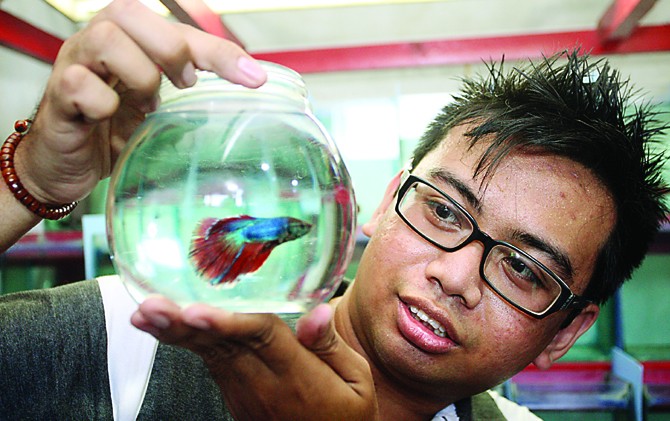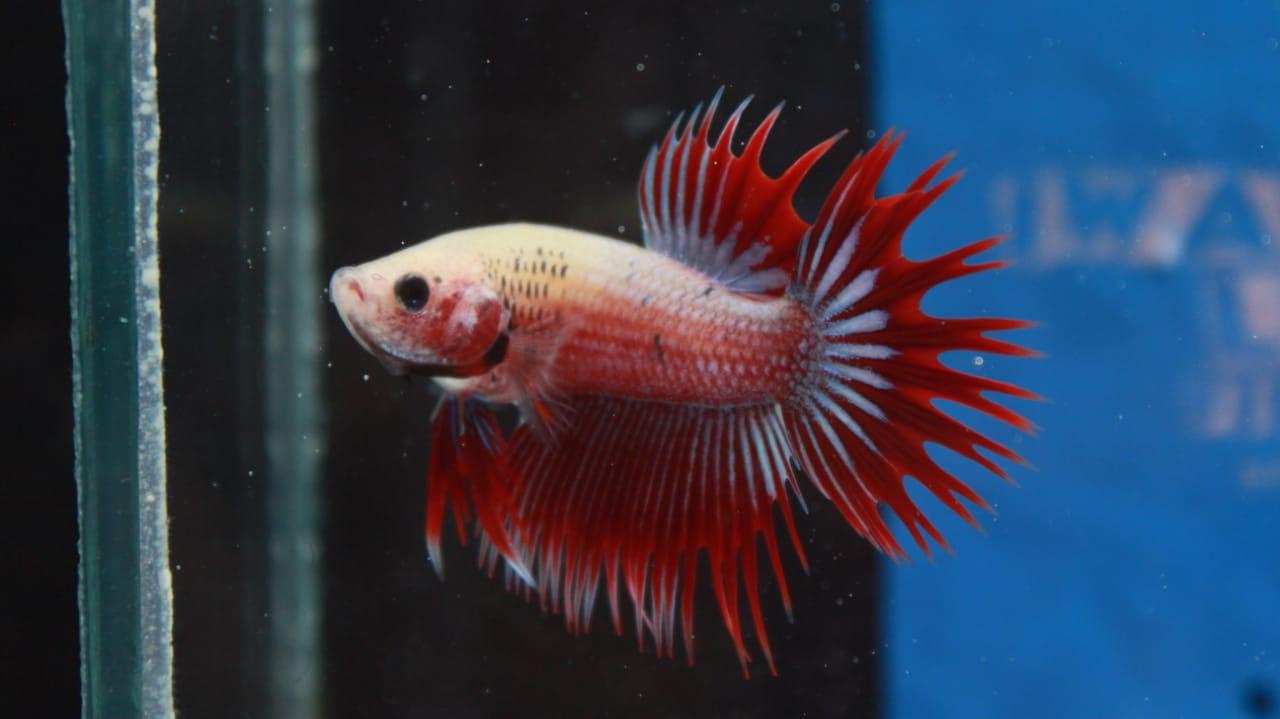UNAIR NEWS – Department of Entrepreneurship (KWU) Student Executive Board (BEM) Faculty of Fisheries and Marine Sciences (FPK) Universitas Airlangga held an online FISHPRENEUR webinar on Thursday morning, May 20, 2021. The topic was “Developing Hobbies and Interests in Fisheries Sector to Become Business Opportunities at Youth”. The event started at 09.00 Western Indonesia Time (WIB) with participants from UNAIR and the general public.
Giovanni Alief as the speaker is an entrepreneur and exporter of betta fish. He is an alumnus of Faculty of Fisheries and Marine Sciences (FPK) UNAIR, graduated in 2016. Giovanni admitted that since high school he has been trying to cultivate fish. However, after graduating from high school, he just started to work in the field of betta fish and gained success during college.
In this event, Giovanni focused on betta fish farming materials and marketing. There are three types of betta fish that are commonly cultivated: natural, ornamental, and fighting fish.
“This time, I will talk more about ornamental betta fish,” he said.
Giovanni explained that ornamental betta fish has the biggest market as there is a wider competition for ornamental betta fish.
Not only for competition, but the ornamental betta fish market can also meet the needs of consumers as a hobby. There are several types of ornamental betta fish: halfmoon, doubletail, crowntail, plaque, and giant.
“The biggest market is ornamental betta fish. Fighting betta has a market, it’s just not as big as ornamental betta, “he said.
“There are more competitions for ornamental bettas, more markets. Not only used as competition fish, there are fish for hobbies and some just for experiments,” he added.
Giovanni also explained the factors that influence the betta fish business. One of the supporting factors is Indonesia which has a tropical climate. Almost all of Southeast Asia, such as Malaysia, Thailand, the Philippines, all cultivate betta fish.
Its main objective is to be exported to non-tropical countries that are difficult for fish farming. If done in a non-tropical place, cultivation must use ultraviolet light.
“Fish that are not exposed to the sun will have less good results. The breeding results cannot be as good as those exposed to the sun,” he said.
Inhibiting factors from the cultivation of betta fish is the excessive numbers of seasonal breeders and traders. Of course, it will make the competition tougher. It will also inevitably lead to a decrease in the number of consumers.
“It naturally happens when a business is on the rise, many people will try to imitate it,” he said.
“It depends on our ability or resilience with the passion we have. If we can maintain with passion, of course we will survive, “added Giovanni.

Giovanni Alif shows one of his betta fish collection. His hobby has led him to become one of the betta fish exporters. (Ghofuur Eka / Jawa Pos / JawaPos.com)
The quality of ornamental betta fish for the contest that has gone through the sorting process will be marketed online or offline. It can also participate in a contest offline, and winning will increase the selling price of the fish. Online competitions or trades generally use social media and online selling sites.
According to Giovanni, the foreign market for ornamental betta fish usually has some requirements. Generally, if you want to market abroad, the photos used / displayed must be excellent and without edits.
Then, generally the fish that are exported are still young to make the fish more resilient for long shipping time. The best services can be done through honest trade by pointing out the advantages and disadvantages of fish to avoid consumers’ suspicions.
“Before shipping the fish, I let the fish fast first so they will not excrete. If the fish excretes and mixes with water, ammonia will appear. So during the delivery, the fish will be in a sleeping condition, “he said.
“We’d better upload photos of our fish on social media even though no one has bought them yet. One day, someone will also remember the upload and look for them. We must always be honest so people believe that our merchandise exists, “he concluded. (*)
Author: Muhammad Ichwan Firmansyah
Editor: Feri Fenoria





